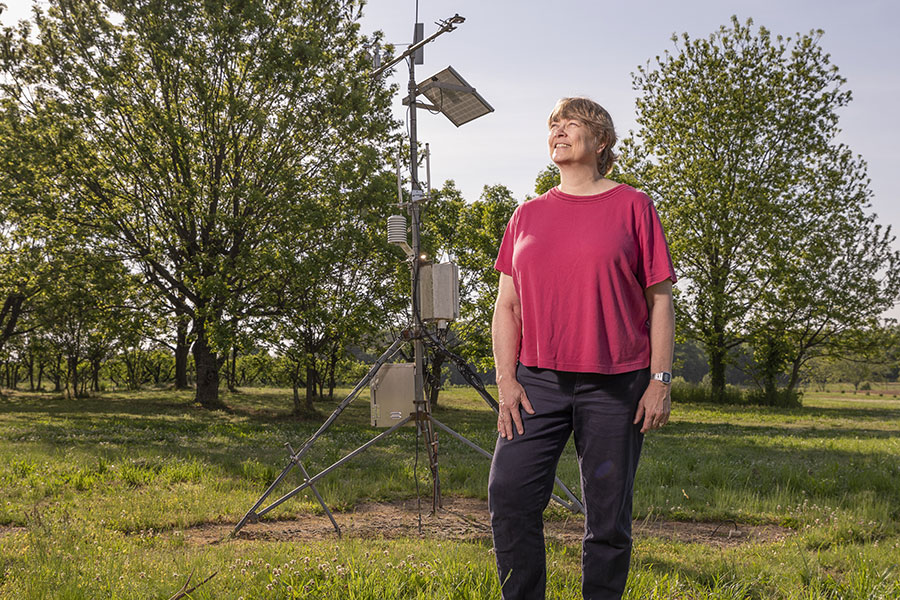June’s rainfall increased the potential for diseases to strike south Georgia watermelon fields, according to University of Georgia Cooperative Extension experts.
Plant diseases, such as phytophthora blight, fruit rot, downy mildew, gummy stem blight and anthracnose, have a tendency to take hold in watermelon fields as a result of heavy moisture.
The pathogen responsible for the phytophthora blight thrives in wet conditions and attacks watermelon fruits, causing pre- and postharvest yield losses. Gummy stem blight is a fungal disease that causes necrotic, dark-colored lesions on leaves and, in severe cases, gummy exudations on stems, UGA plant pathologist Bhabesh Dutta said. Anthracnose is a fungal disease that also prefers warm, moist conditions. Symptoms include necrotic, irregularly shaped lesions on leaves and dark, sunken spots on fruits.
Dutta believes these diseases could impact yields if farmers don’t maintain a stringent treatment program this growing season.
“While some places in southern Georgia may have had only a couple of inches of rain in the last couple of weeks, there have been other places that have had more than 8 or 9 inches. Thus far, growers have been diligent with their fungicide sprays, and disease has not been a problem that has impacted farmers across the board. But, due to conditions in specific locations, it may become an issue,” UGA vegetable horticulturist Timothy Coolong said.
Between June 1 and June 18, Moultrie, Georgia, received 4.07 inches of rainfall, according to the Georgia Automated Environmental Monitoring Network. During the same time period last year, Moultrie received only 4.4 inches. In this interval, Moultrie saw 14 rainy days compared to just six rainy days the previous year.
Tifton, Georgia, received less rainfall from June 1 to June 18 this year than last year — 2.6 inches compared to 3.26 inches. However, there have been 13 rainy days in Tifton during this period in 2017 compared to just seven rainy days this time a year ago.
“Conditions are certainly not ideal. I think if you ask most growers, they would prefer warm and dry conditions. Earlier this spring, the weather was warmer and drier than is typical, but with continuous rain events like we’ve had recently, conditions are now favorable for the development of several diseases,” Coolong said.
Increased rainfall does mean a decrease in temperatures. In Moultrie last year, from June 1 to June 18, the average high temperature was 90.42 degrees Fahrenheit. This year, the average temperature for the same time period is 85.97 F. In Cordele, Georgia, last year’s average high temperature was 92.29 F compared to 86.95 F this year.
“Last year, the second week in June was quite warm. The temperature was in the low- to mid-90 degree range every day for several days. The high temperatures with clear skies caused sun scald damage to the melons,” Coolong said. “This week is supposed to be mostly cloudy, meaning less potential for sunburn. But the disadvantage is that the wet weather could lead to more disease potential.”
The accumulated rainfall means growers must pay the extra cost of chemical applications. Farmers could invest $70 or $80 per acre in a spray program to combat these diseases, Coolong said.
“If you add that up over several hundred acres, it is a significant weekly expense,” he said. “I would say that vegetable growers prefer dry conditions. Spray control for these diseases can be very expensive.”
Watermelons are grown predominantly in south Georgia and had a farm gate value of $124.5 million in 2015, according to the UGA Center for Agribusiness and Economic Development.





